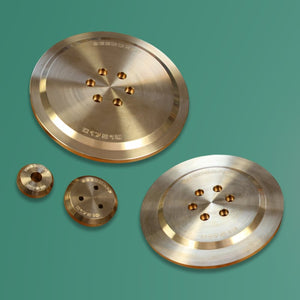
The Fundamentals of Spot Welding
The joining of two or more disconnected weldable metals for the purpose of producing a single component to serve a specific purpose.
The term “Spot Welding” is synonymous with “Resistance Welding”.
This process is achieved by short-circuiting an Electrical Source through the stack of weldable Metals in order to bring the metals to a molten state under an applied force so that the metals will fuse together. This process requires no filler material.
The Heat to cause the metals to fuse is a derivative of the Electrical Resistance of the Metals and their Joining Interfaces (in Micro-Ohms) divided into a variable Voltage Output of the Electrical Source to produce a “Welding Current”. The Electrical Resistance of the Metals is usually constant. The Electrical Resistance of the Joining Interface is determined by the Applied Force at the Electrodes and the oxides or contaminants on the Work and Electrodes.
Control of this process is usually achieved by means of a Microprocessor Driven Electronic Control System. All Functions are precisely administered through this welding control.
Typical Control Functions
Squeeze Time
The time allotted for the Movable Electrode to make contact with the work and develop the required Welding Force. Programmable in Cycles. (1 Cycle = 1/60 of a second)
Weld Time
Begins automatically after Squeeze Time. The time allotted for the Electrical Source to “short circuit” or “conduct” through the stack of weldable metals under applied force. Programmable in Cycles. (1 Cycle = 1/60 of a second)
Percent Heat or Percent Current
During “Weld Time”, the Electrical Source output is determined by this setting. A larger number signifies more heat or “hotter welds”
Hold Time
Begins automatically after Weld Time. The time allotted for the Movable Electrode to remain under force against the work before retracting. Programmable in Cycles. (1 Cycle = 1/60 of a second)
Off Time
Begins automatically after Hold Time. The time allotted for the Movable Electrode to remain retracted. Once the time has elapsed, the Welding Control automatically reinitiates the Weld Schedule. This timing function is only used when the “Repeat Switch” is ON. Programmable in Cycles. (1 Cycle = 1/60 of a second)


